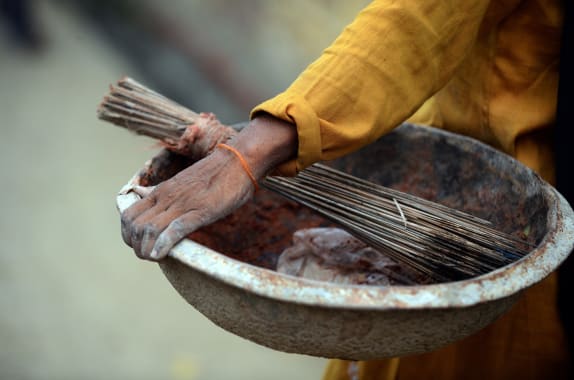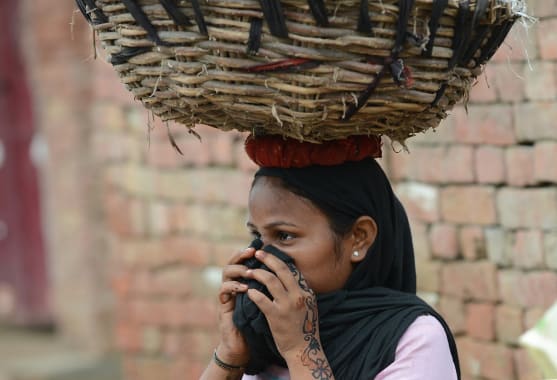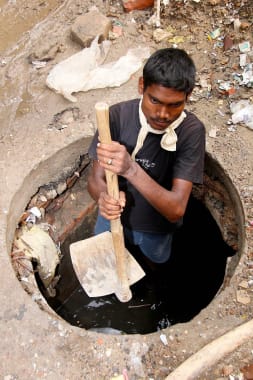 |
| [Pic courtesy: Reuters / Danish Siddiqui} |
The British decision to leave the European Union
is seen by many as a rejection of globalization, although the thumbs
down was on free movement of labor within the bloc and not on free trade
or unrestricted flow of capital within.
At the same time, the world’s largest
democracy—India—was preparing to mark its 25th anniversary of joining
the list of globalizing nations. While lifting India’s GDP,
globalization has increased an already wide chasm between a rich
minority and poor majority.
Over the years the New Economic Policy, or NEP,
introduced by the Indian government in 1991, morphed into a compendium
of economic liberalization, privatization and opening up to the world.
NEP has come to be viewed as combining India’s entry into a globalizing
world with its adoption of the neoliberal model of economic
development—a brainchild of the International Monetary Fund (IMF) and
the World Bank. Also known as the Washington Consensus, this model
requires a government to reduce the state’s role in the economy, cut
state spending and subsidies, abolish price controls, privatize public
undertakings, reduce tariffs, welcome foreign direct investment, and
regulate the financial sector lightly.
In India the NEP architect was Manmohan Singh,
then finance minister and later prime minister, who had once served as
chief trade economist at the UN Conference on Trade and Development, an
associate of the IMF and the World Bank. Narendra Modi, the current
prime minister, is also committed to implementing the NEP.
Pursuit
of this policy resulted in annual economic growth breaking out of the
3-5% band of the pre-1991 era. But redistribution of the extra wealth
has been skewed. Those already better off have improved their living
standards further whereas the large majority who lagged behind before
have stagnated or grown poorer.
India’s embracing of globalization came in the
wake of an international crisis. Following Iraq’s invasion and
occupation of Kuwait in August 1990 and the subsequent loss of their
petroleum exports, the price of oil rocketed and remittances of the
reduced Indian workforce in the Gulf fell. By the spring of 1991,
Delhi’s foreign exchange reserves fell to $1.21 billion, just enough to
cover about two weeks of imports.
The government faced the unpalatable prospect of
defaulting on sovereign loans and approached the IMF for assistance
which came with strings attached. The financial crisis gave a fillip to
free marketeers who urged prime minister P V Narasimha Rao to undertake
far-reaching transformation of the economy. The government abolished
import quotas, slashed tariffs from over 100% to a range of 25-36%, and
ended industrial licensing except for defence and national strategy
enterprises. Public-sector monopolies were limited to security, national
strategy, nuclear power and railways. Private investment was allowed in
banking, insurance, telecommunications and air travel. Foreign
companies were permitted equity up to 51% in 34 industries.
The result was noticeable. From 1991 to1996,
average annual GDP expansion was 6.7%. India’s foreign exchange reserves
rose to $22.74 billion.
However
the expansion rate really picked up after 2000. Besides economic
liberalization, other extraneous factors came into play, independent of
domestic policies. One was the arrival of mobile phones and the
internet, and the other was the high-tech revolution in information
technology.
Growth in mobile phone usage has been phenomenal,
zooming from less than 37 million subscriptions in 2001 to more than
846 million in 2011 to crossing the 1 billion mark last year.
Mobile-phone density impacts economic expansion. A study by the Indian
Council for Research on International Economic Relations showed that the
states with 10% higher mobile phone penetration produced 1.2% higher
economic growth than those with lower telephone density.
IT along with its allied business process
outsourcing sector has benefited India, helping to boost its foreign
earnings. Whereas panic about the Y2K bug crashing computers at the turn
of the new millennium proved mostly unfounded, it helped create a niche
for India’s techies. Western companies found that rates charged by
Indian IT firms to immunize computer systems against the millennium bug
were a fraction of rates charged by Western competitors. Overwhelmed by
orders, Indian companies worked round the clock to finish the job.
India’s exports of IT services doubled in two years from $2.6 billion in
1998-1999. Since then exports have accounted for three-quarters of the
industry’s turnover. The industry’s contribution to India’s exports
soared from 4% in 1998-1999 to about 25% in 2012-2013.
But the 12.5 million employed directly and
indirectly by the IT sector amount to a mere 2.5% of the national labor
force of 496 million in a country with 1.25 billion people.
The
bottom line is that India is an agrarian society. Seven out of 10
Indians live in villages. A little over half of the nation’s workforce
is engaged in agriculture and allied activities.
As part of the IMF loan, India was required to
reduce its fiscal deficit of 8.2% of GDP. The Rao government drastically
cut its investment in irrigation, water management, flood control and
scientific research, power generation and related rural needs. Later,
pressured by the World Trade Organization (WTO) and the IMF, India
started withdrawing market controls and curtailing subsidies for such
agricultural inputs as chemical fertilizers and diesel.
The emphasis of the WTO and the IMF on export-led
growth encouraged cultivators to switch from food crops to
fertilizer-intensive cash crops like cotton, coffee, sugarcane,
groundnuts, pepper and vanilla. As a consequence, the daily per capita
availability of food grains declined from 510 grams in 1991 to 422 grams
in 2005. The general lack of rural development and neglect of poverty
alleviation has meant continuing malnutrition. A 2009 study by the
official National Nutrition Monitoring Bureau showed 35% of Indians
suffering from chronic hunger as measured by body mass index.
During the first post-NEP decade indebted farm
households nearly doubled, from 26% to 48.6%. The ratio of debt to
assets rose from 1.6 to 2.4, an increase of 50%. The trend has
continued, with an increasing number of indebted farmers committing
suicide.
At
the other end of the economic spectrum, the number of dollar
billionaires in India has jumped. Between 2004 and 2015, their number
rocketed from 13 to 111, the third largest after the United States and
China, according to an annual list published by the Chinese magazine
Hurun. A year earlier the number of dollar millionaires crossed the
250,000 mark.
To defuse rising social tensions caused by
obscene inequality, a democratically elected government periodically
intervenes to redistribute wealth equitably by passing laws to benefit
the large indigent majority. For instance, in 2006, pressured by 59
Communist MPs, the minority government of Manmohan Singh passed the
National Rural Employment Guarantee Act, guaranteeing households 100
days of work to build or repair village infrastructure.
In 2013 the Singh government, yielding to
pressure by leftists, trade unionists and NGO activists, passed the
National Food Security Act to provide subsidized food grains to about
two thirds of India’s population. The program’s continuation under the
Modi government, albeit in reduced form, has averted large-scale hunger
in India’s villages during lean seasons.
A panoramic view of the past quarter century indicates that advance of NEP has not been smooth.
Increased GDP growth has come at the cost of
ever-widening inequality. Grassroots resistance to NEP in India’s
democratic environment has made its progress intermittent. This pattern
is set to continue irrespective of which of the two major parties—the
Congress or the Bharatiya Janata Party—is in power.
This post originally appeared on Yaleglobal.yale.edu.











